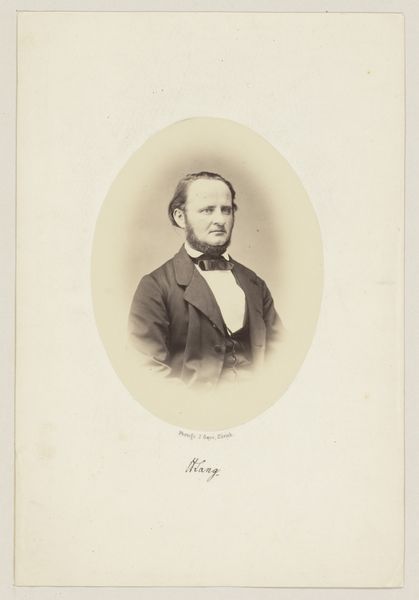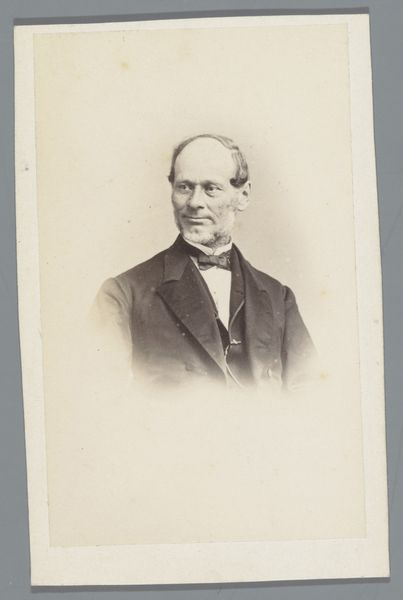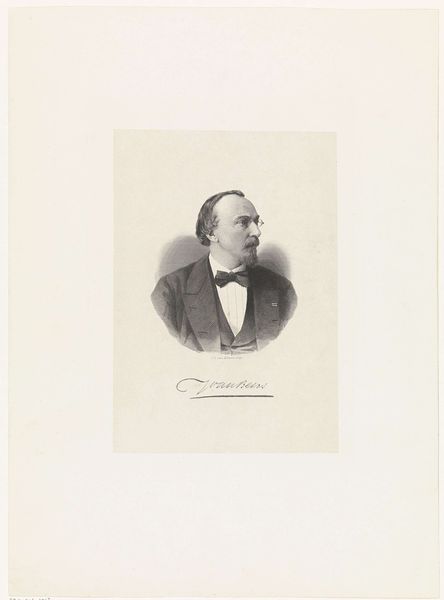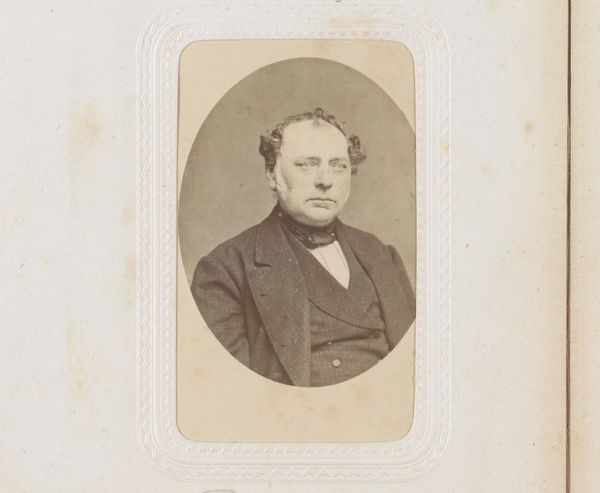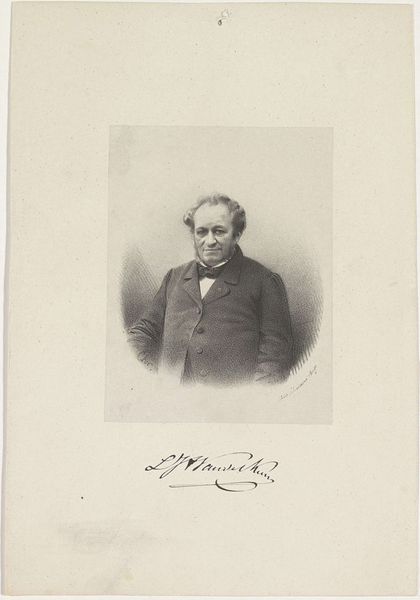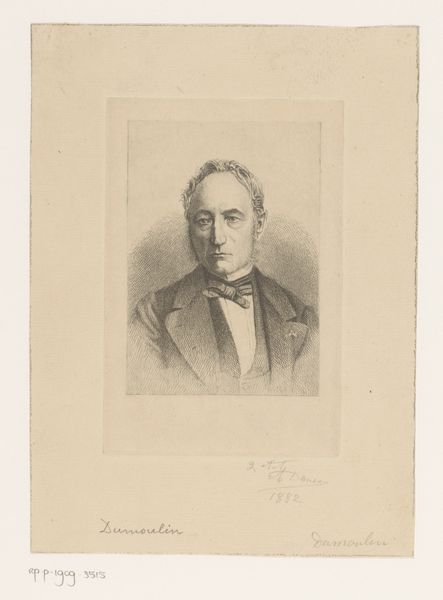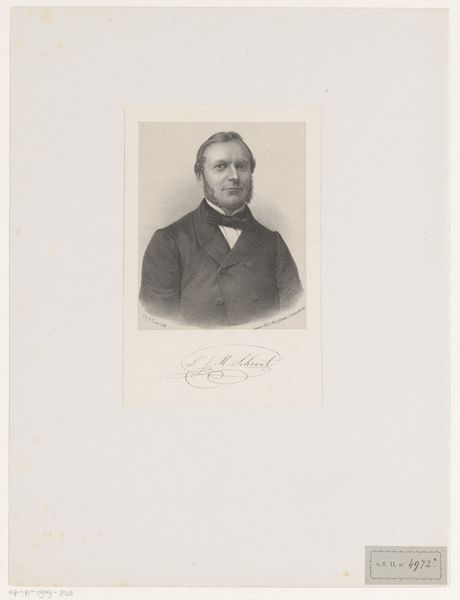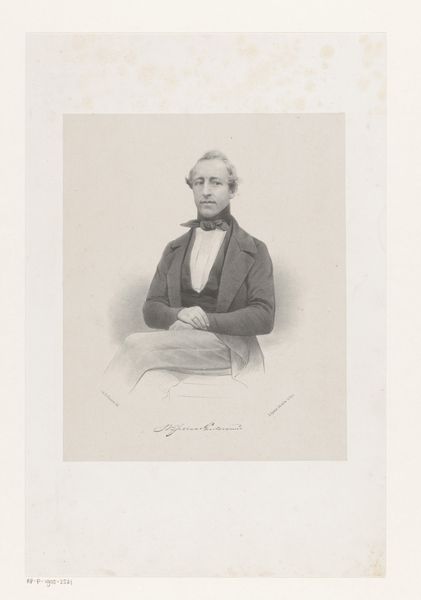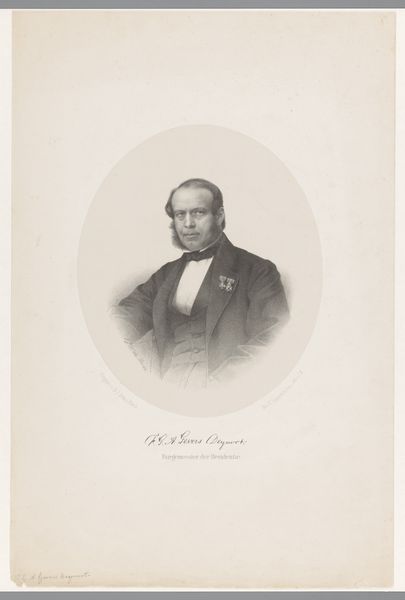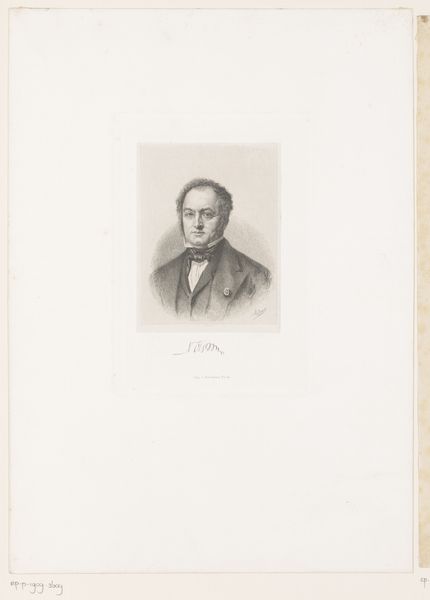
print, engraving
#
portrait
#
pencil drawn
# print
#
pencil drawing
#
portrait drawing
#
engraving
#
realism
Dimensions: height 172 mm, width 112 mm
Copyright: Rijks Museum: Open Domain
This portrait of Antoine Frédéric Spring was made by François de Meersman. What can be said about the public role of art in nineteenth-century Belgium? Well, portraiture was no longer the sole preserve of the aristocracy. As the middle class grew in power and influence, it began to adopt certain cultural practices of the elite, using them as markers of status. Depictions of male figures in the context of the nineteenth century, often served as symbols of power, authority, and societal status. The man in the image is besuited, a signifier of a certain social status. To understand the institutional history of this work, we would need to investigate the artistic conventions and the cultural values of the time. We can delve into archives and biographies to understand the social conditions that shaped its creation. What was the nature of artistic training at the time? What were the popular styles and themes? How did the art market operate? The answers to these questions are crucial for understanding the painting's role within the social and cultural landscape of its time.
Comments
No comments
Be the first to comment and join the conversation on the ultimate creative platform.
